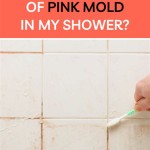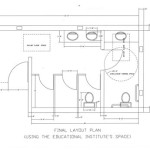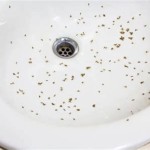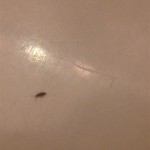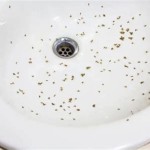Removing Mildew From Bathroom Ceilings: A Comprehensive Guide
Bathrooms, by their very nature, are prone to high humidity and moisture levels. These conditions, coupled with poor ventilation, create an ideal environment for mildew growth, particularly on ceilings. Mildew, a type of fungus, not only poses aesthetic concerns but can also contribute to health issues, especially respiratory problems. Therefore, addressing mildew growth on bathroom ceilings promptly and effectively is crucial for maintaining a healthy and clean home.
This article provides a detailed guide on identifying, removing, and preventing mildew growth on bathroom ceilings. It covers various methods, from simple household solutions to more robust chemical treatments, while emphasizing safety precautions and preventative measures.
Identifying Mildew
Before embarking on the removal process, it is essential to correctly identify the substance as mildew and differentiate it from mold. While both are fungi that thrive in damp environments, there are key distinctions. Mildew typically appears as a flat, powdery or fluffy growth that is white, gray, or sometimes yellow. It often has a musty odor. Mold, on the other hand, tends to be more textured, can be black, green, or brown, and may have a stronger, more pungent smell.
On bathroom ceilings, mildew often manifests as small, scattered spots or patches that gradually expand over time. It is commonly found near ventilation sources, corners where moisture accumulates, and areas directly above showerheads or bathtubs. A simple test to distinguish between mildew and mold involves applying a small amount of household bleach to the affected area. If the discoloration disappears within a few minutes, it is likely mildew. However, it is crucial to exercise caution when using bleach and to follow safety precautions as outlined later in this article.
Ignoring mildew growth can lead to more significant problems. Over time, mildew can penetrate deeper into the ceiling surface, making removal more challenging. Furthermore, persistent moisture can weaken the ceiling material, potentially leading to structural damage. In severe cases, prolonged exposure to damp conditions can cause mold to develop, which poses a greater health risk. Regular inspection of bathroom ceilings for signs of mildew is therefore a proactive measure that can save time, money, and potential health problems in the long run.
Effective Removal Methods
Several methods can be employed to remove mildew from bathroom ceilings, ranging from natural solutions to commercial cleaners. The choice of method depends on the severity of the mildew growth and the type of ceiling material. Before applying any cleaning solution, it is crucial to protect oneself by wearing appropriate personal protective equipment (PPE). This includes gloves, eye protection, and a face mask to prevent inhalation of spores and chemicals. Proper ventilation is also essential; opening windows or using an exhaust fan will help to dissipate fumes and moisture.
1. Vinegar Solution: White vinegar is a natural and effective mildew remover. Its acidic properties disrupt the growth of fungi. To use vinegar, mix equal parts white vinegar and water in a spray bottle. Spray the affected area thoroughly and let it sit for at least an hour. Then, scrub the ceiling with a sponge or soft brush and rinse with clean water. Repeat the process if necessary. Vinegar is a relatively safe option for most ceiling types, but it is always advisable to test a small, inconspicuous area first to ensure it does not damage the surface.
2. Baking Soda Paste: Baking soda is another natural remedy for mildew removal. Its mild abrasive properties help to lift mildew stains. Create a paste by mixing baking soda with water until it forms a thick consistency. Apply the paste to the affected area and let it dry completely. Once dry, scrub the ceiling with a brush or sponge and rinse with clean water. Baking soda is particularly effective at removing mildew from textured ceilings, as the paste can penetrate the crevices and dislodge the fungus.
3. Bleach Solution: Bleach is a powerful disinfectant that can effectively kill mildew spores. However, it should be used with caution due to its corrosive properties and potential health hazards. When using bleach, it is crucial to dilute it properly. Mix one part bleach with ten parts water in a spray bottle. Spray the solution onto the affected area and let it sit for 10-15 minutes. Avoid prolonged exposure, as bleach can damage the ceiling material. Rinse thoroughly with clean water and ensure the area is well-ventilated. Always wear gloves, eye protection, and a face mask when working with bleach. Never mix bleach with ammonia, as this can create toxic fumes.
4. Commercial Mildew Removers: Numerous commercial mildew removers are available on the market. These products typically contain stronger chemicals than natural solutions and can be more effective at removing stubborn mildew stains. Always read and follow the manufacturer's instructions carefully when using commercial mildew removers. Ensure the product is specifically designed for use on ceilings and is compatible with the ceiling material. Like bleach, commercial mildew removers should be used with proper ventilation and PPE.
After applying any cleaning solution, it is essential to dry the ceiling thoroughly. Use a clean cloth or towel to wipe away excess moisture. For optimal drying, consider using a dehumidifier or fan to circulate air in the bathroom. A completely dry ceiling is less susceptible to future mildew growth.
Preventing Future Mildew Growth
Once the mildew has been successfully removed, implementing preventative measures is crucial to avoid recurrence. Addressing the underlying causes of mildew growth, such as high humidity and poor ventilation, is key to long-term prevention.
1. Improve Ventilation: Adequate ventilation is essential for reducing moisture levels in the bathroom. Ensure the exhaust fan is functioning properly and use it during and after showering or bathing. If the bathroom lacks an exhaust fan, consider installing one. Opening a window after showering can also help to dissipate moisture. For bathrooms with limited natural ventilation, a dehumidifier can be used to actively remove moisture from the air.
2. Control Humidity Levels: Aim to maintain a humidity level below 60% in the bathroom. A hygrometer, a device that measures humidity, can be used to monitor moisture levels. Addressing leaks, whether from showerheads, faucets, or pipes, is crucial for preventing moisture buildup. Repairing any leaks promptly will eliminate a primary source of moisture that fuels mildew growth.
3. Regular Cleaning: Regularly clean the bathroom, including the ceiling, to remove any mildew spores before they have a chance to colonize. Wipe down the ceiling with a damp cloth and a mild detergent every few weeks. Pay particular attention to areas prone to mildew growth, such as corners and areas near the shower. Consider applying a mildew-resistant paint to the ceiling. These paints contain additives that inhibit the growth of fungi. Before painting, ensure the ceiling is completely clean and dry. Follow the manufacturer's instructions for application.
4. Proper Sealing and Caulking: Ensure that the seams and edges around the shower, bathtub, and sink are properly sealed and caulked. This prevents water from seeping into walls and ceilings, creating a breeding ground for mildew. Inspect the sealant and caulk regularly and repair any cracks or gaps promptly. Use mildew-resistant caulk specifically designed for bathroom environments.
5. Avoid Moisture Trapping: Remove wet towels and bath mats promptly after use. Hang them up to dry or place them in a well-ventilated area. Avoid leaving wet items on the floor or hanging over the shower curtain, as this can trap moisture and contribute to mildew growth. Consider using shower curtains or doors made of mildew-resistant materials.
By implementing these preventative measures, individuals can significantly reduce the risk of mildew recurrence and maintain a clean, healthy bathroom environment. Consistent attention to ventilation, humidity control, and regular cleaning will prevent the conditions that favor mildew growth.

Bathroom Ceiling Mold Removal When To Clean Call Branch Environmental

Cleaning Mold From Bathroom Ceilings Like A Pro Lovetoknow

How To Remove Black Mold From A Bathroom Ceiling

What Is The Best Way To Remove Mold From Bathroom Ceiling

Mold On Bathroom Ceiling How To Remove From

Mold On Bathroom Ceiling How To Clean Off

Mold On Bathroom Ceiling How To Clean Off

How Do You Remove Mold From Bathroom Textured Ceiling Hometalk

How To Get Rid Of Mold On Your Bathroom Ceiling Aqa

Black Spots On The Bathroom Ceiling Flood Water Damage Honolulu Oahu Hawaii Md Restoration
Related Posts
